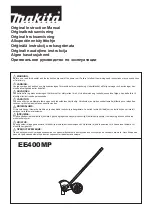
— 13 —
For compatibility with legacy displays, the Device sends measurement data in PGN 127508
«Battery Status» (with voltage, current and case temperature data only) which is supported by most
NMEA 2000 displays on the market. On the Figure 1 above, State of Charge (SoC) and Time Till Zero
Charge (TTZ) from PGN 127506 «DC Detailed Status» are also shown.
2. Monitor solar panels and wind generators
Though the NMEA 2000 standard distinguishes between different types of power sources, the vast majority
of modern MFDs are still incapable of monitoring solar panels and wind generators: they are shown
as ordinary batteries. However, we believe that as these alternative power sources become more popular,
MFD manufacturers will upgrade their solutions to let them handle the full range of data that the Battery
Monitor supplies. In the Device’s settings, you can configure DC source type as battery, solar cell, wind
generator, alternator or DC converter (see Section IX).
3. Receive alerts on battery’s State of Charge
If the battery SoC falls below the pre-specified threshold, it may decrease battery lifespan or even fail
to perform a vital action, i.e. start an engine, feed navigation lights or run a bilge pump.
Using Digital Switching commands, the Device can be programmed to automatically detect an insufficiently
state of charge, and turn on a specified DS channel in a specified bank (see IX.3 and Section XI for details).
YD:SS1 ON <40 0 0 1
In this example, the rule turns ON Channel #1 at the DS Bank #0 when the calculated SoC value
momentarily drops below 40%.
Содержание NMEA 2000 YDBM-01
Страница 66: ......














































